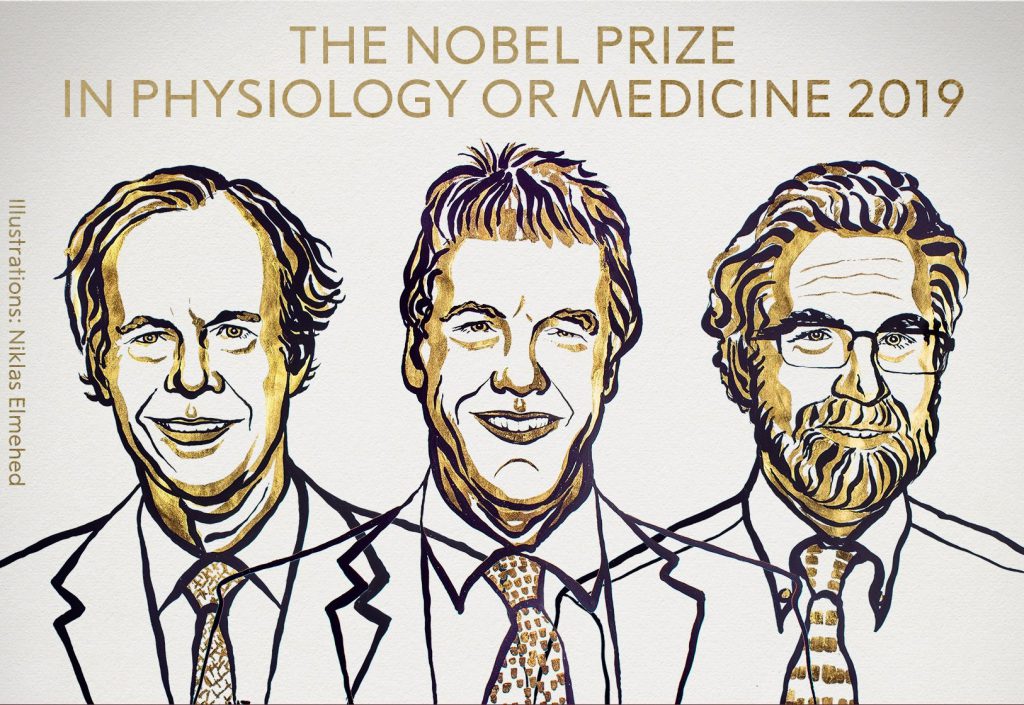09/10/2019 Opinion

Maria Rosa Fenoll-Brunet, lecturer in Histology
Oxygen (O2), at the centre of the Nobel Prize stage
The studies carried out by the prize-winners William G. Kaelin, Gregg L. Semenza and Peter J. Ratcliffe describe the mechanisms of one of life’s most essential adaptive processes

The studies carried out by the prize-winners William G. Kaelin, Gregg L. Semenza and Peter J. Ratcliffe describe the mechanisms of one of life’s most essential adaptive processes
The composition of the human body can be described in terms of its content of water and the elements (oxygen, carbon, hydrogen, nitrogen and 12 mineral salts) in the various types of tissue and cells. Each of these cells needs to obtain nutrients, produce proteins and eliminate residues. And the element that provides the energy for this is oxygen, an element that makes the atmosphere of planet Earth unique and provides the energy that supports the life of all living beings. Oxygen, which we obtain from the water we drink and every one of our respiratory movements, is transported by the haemoglobin in the blood to the 70 trillion cells in the body, where it is used as useful energy at the mitochondrial level and regulates the respiratory rate according to the levels detected by the chemical sensors located at the fork in the carotid artery.
The study of the mechanisms that shed light on “how cells sense and adapt to the availability of oxygen” has won the Nobel Prize for Physiology or Medicine 2019. The studies carried out by the prize-winners William G. Kaelin, Gregg L. Semenza and Peter J. Ratcliffe describe the mechanisms of one of life’s most essential adaptive processes and identify the molecular machinery of protein complexes that regulates the activity of the gene erythropoietin in response to different levels of oxygen.
It is a big step forward in the field of epigenetics, the system of molecular marking of DNA that regulates which genes need to be specifically activated or deactivated in each cell. Cell identity in both illness and in health is determined by programmed epigenetic activation or by silencing subsets of specific genes. Understanding these processes paves the way for promising new epigenetic therapies.
More news about: Opinion
